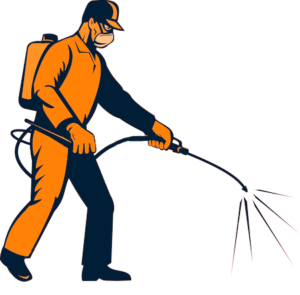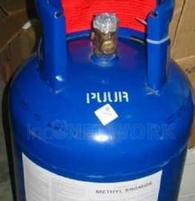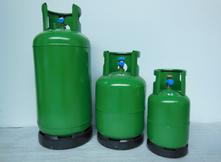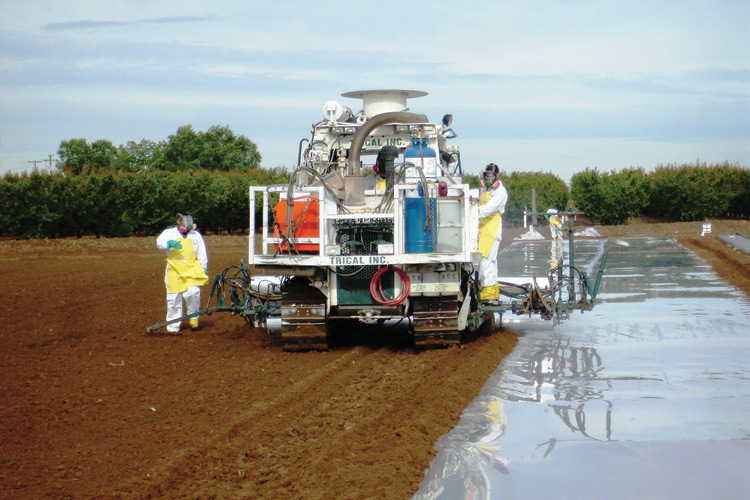Fumigation


Methyl Bromide is a common fumigant, widely used for fumigation of stored products and quarantine treatments. It is a broad spectrum fumigant used against a wide variety of pests including spiders, mites, fungi, plants, insects, nematodes, and rodents. Application for methyl bromide primarily are for pre-shipment fumigation and quarantine treatment to kill nematodes, fungi, and weeds. Pesticide applicators also use methyl bromide to treat perishable commodities and buildings. Methyl Bromide is the best fumigant available so far due to its ovicidal properties. It’s the only known ovicidal (kills even the egg stage of insects) fumigant. It is in gaseous form and has an excellent penetrating power. It kills broad spectrum of pest compared to any other fumigants. Moreover, it doesn’t make the pest resistant to the chemical which happens incase of prolong use of any other fumigant. Methyl bromide is produced naturally and synthetically. The major sources in the environment are the oceans, biomass burning, and fumigation use. The primary use of methyl bromide is for fumigation of food commodities (e.g., grains); and in storage facilities (such as mills, warehouses, vaults, ships, and freight cars) to control insects and rodents.
Products Type: : 100 % Methyl Bromide
Methyl Bromide 98: It is a formulated product consisting of 98% Methyl Bromide and 2% Chloropicrin .
Packeging
Cans : 1 lb ,1.5 lb FOR formulation 98
Cylinders :20 kg, 50 kg ,100 kg for formulation 98 ,100
 Methyl bromide, a natural product.
Methyl bromide, a natural product.
Methyl Bromide is a colourless, odourless gas that is mainly produced by nature (oceans, rice fields, etc.). As nature also absorbs Methyl Bromide, there is a constant natural cycle of the gas.nature (oceans, rice fields, etc.). As nature also absorbs Methyl Bromide, there is a constant natural cycle of the gas.
Methyl Bromide is a toxic colorless and odorless gas. Chlorpicrin is add as a warning agent. The use of Methyl Bromide is strictly regulated by the Montreal Protocol. Methyl Bromide is mainly used for quarantine and Pre-shipment applications of different commodities.
The use of the product is only allowed by licenced fumigat
Methyl Bromide is used for two main purposes:

1. In commodities:
Fumigating of commodities which may be infested with pests when harvested or later. The use of Methyl Bromide in this context is often necessary to meet quarantine and phytosanitary or other contractual requirements for import and export.
Methyl Bromide can be used to fumigate:
Durable commodities like grains, coffee and cacao beans, oil seeds, dried fruit, herbs, nuts, timber, cottonseed, wooden items.
Perishable commodities like fruit, vegetables, flowers. Food safety and health regulations are often requiring these fumigations.
Methyl Bromide gas is released as a vapourised gas or directly from its container into a fumigation chamber or under a tarp containing the commodities. Some commodities are treated multiple times during both storage and shipment.
Methyl Bromide is typically applied directly from the cylinder through a narrow bore application line culminating in an atomising jet to enhance the speed of vaporisation the fumigant.
Commodities may be treated with Methyl Bromide as part of a quarantine or phytosanitary requirement of an importing country.
The amount of Methyl Bromide introduced is calculated according to label, contractual and legislative requirements.
The degree of containment of Methyl Bromide achieved during fumigation can vary widely. Some commodities are fumigated in gastight, purpose build fumigation chambers while others are treated in very poorly sealed bagged stacks.
2. In structures and transport:
Methyl Bromide is used to safeguard buildings, such as grain storage facilities, flour mills, food processing units, or vehicles, such as ships, freight containers, trucks or trains carrying agricultural commodities from all kinds of pests.
Also here the degree of containment of Methyl Bromide can vary widely. E.g. Some aircraft and modern buildings can be very gastight whereas older structures can at best be only partially sealed.



